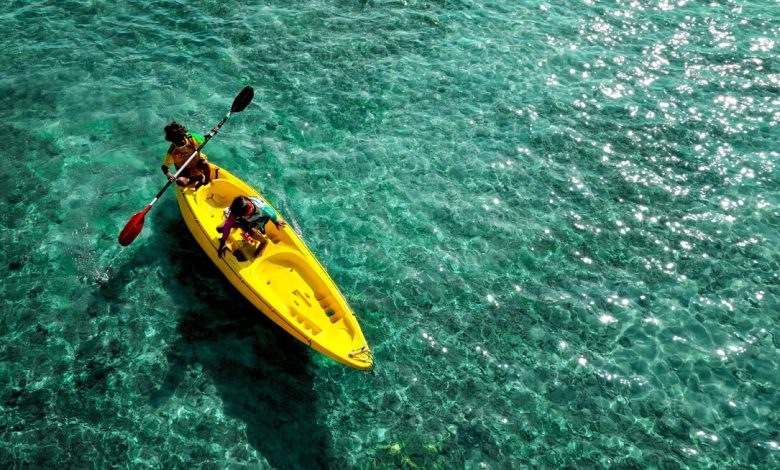Trends in Kayak Retail: Consumer Preferences

In the vast expanse of outdoor recreational activities, kayaking has emerged as a beloved pastime for adventure enthusiasts worldwide. As we delve into the world of kayaks, it’s essential to understand the dynamic landscape of kayak retail. This article aims to explore the intricate web of consumer preferences shaping the trends in kayak retail today.
Understanding Consumer Preferences
Before diving into the depths of kayak retail trends, let’s first navigate the concept of consumer preferences. Consumer preferences refer to the subjective tastes, needs, and desires that influence individuals’ purchasing decisions. In the realm of kayaks, preferences vary widely, influenced by factors such as age, skill level, intended use, and environmental consciousness.
Understanding these preferences is crucial for retailers aiming to cater to their target market effectively. For instance, while some consumers may prioritize speed and performance for recreational racing, others may value stability and comfort for leisurely river floats or fishing excursions. By aligning product offerings with these preferences, retailers can better meet the diverse needs of their customers.
Current Market Trends
The kayak retail market is experiencing a surge in popularity, driven by an increasing interest in outdoor activities and water sports. According to a report by the Outdoor Industry Association, kayak sales have been on the rise, with a notable increase in recreational kayak purchases. This trend can be attributed to a growing emphasis on health and wellness, as more individuals seek out outdoor adventures for physical exercise and stress relief.
Technological advancements have also played a significant role in shaping the current landscape of kayak retail. Innovative materials, such as lightweight plastics and composite fibers, have led to the development of sleeker, more durable kayak designs. Additionally, features like adjustable seating, storage compartments, and tracking systems have enhanced the overall kayaking experience, attracting both novice paddlers and seasoned enthusiasts alike.
Popular Kayak Types and Variations
Kayaks come in a myriad of shapes, sizes, and designs, each tailored to specific purposes and preferences. Understanding the nuances of these variations is essential for both retailers and consumers alike.
Sit-on-top kayaks: These kayaks feature an open cockpit design, making them ideal for beginners and warm-weather paddling. Their stability and ease of use make them popular choices for recreational kayakers and families.
Recreational kayaks: Characterized by their wider hulls and stable designs, recreational kayaks are well-suited for calm lakes, ponds, and slow-moving rivers. They offer comfort and ease of maneuverability, making them ideal for leisurely paddling adventures.
Touring kayaks: Designed for longer excursions and open water exploration, touring kayaks feature sleek, narrow hulls optimized for speed and efficiency. They typically offer ample storage space for gear and provisions, making them popular among adventurous kayakers embarking on multi-day trips.
Fishing kayaks: With specialized features such as rod holders, tackle storage, and stable platforms, fishing kayaks cater to anglers seeking a more intimate and eco-friendly fishing experience. Their maneuverability and stealth make them well-suited for accessing remote fishing spots inaccessible to larger boats.
Environmental Considerations
As outdoor enthusiasts, kayakers share a deep appreciation for the natural environments they explore. In recent years, there has been a growing awareness of the environmental impact of kayak manufacturing and usage.
Kayak retailers are increasingly embracing eco-friendly practices, such as using recycled materials, minimizing waste in production processes, and supporting conservation initiatives. Brands like Eddyline Kayaks and Oru Kayak have gained popularity for their commitment to sustainability, offering high-quality kayaks crafted from recycled plastics and utilizing energy-efficient manufacturing techniques.
Moreover, consumers are actively seeking out environmentally conscious brands and products, driving demand for eco-friendly alternatives in the kayak retail market. By prioritizing sustainability and environmental stewardship, retailers can not only attract environmentally conscious consumers but also contribute to the preservation of the natural ecosystems that kayakers cherish.
Online vs. Brick-and-Mortar Retail
In the digital age, consumers have more choices than ever when it comes to purchasing kayaks. While traditional brick-and-mortar retailers offer the advantage of hands-on product testing and personalized customer service, online retailers provide convenience and a vast selection of products.
Online kayak retailers like REI and Amazon offer a seamless shopping experience, allowing customers to compare prices, read reviews, and make purchases from the comfort of their homes. However, brick-and-mortar stores continue to thrive, leveraging their physical presence to provide expert guidance, in-person demos, and post-purchase support.
The key for kayak retailers is to strike a balance between the convenience of online shopping and the personalized service of brick-and-mortar stores. Many retailers have adopted omnichannel strategies, integrating their online and offline channels to offer a seamless shopping experience across multiple touchpoints.
Brand Preferences
When it comes to choosing a kayak, brand reputation and quality play significant roles in consumer decision-making. Established brands like Wilderness Systems, Hobie, and Perception Kayaks have built loyal followings based on their track record of innovation, durability, and performance.
However, emerging brands are also making waves in the kayak retail market, challenging established players with their innovative designs and competitive pricing. Brands like Bonafide Kayaks and Crescent Kayaks have gained traction among consumers seeking affordable yet high-quality kayaks for recreational and fishing purposes.
Influencing Factors
The landscape of kayak retail is shaped by various influencing factors, from marketing and advertising to social media and online reviews. Retailers employ a range of strategies to influence consumer preferences and purchasing decisions, leveraging storytelling, brand ambassadors, and targeted advertising campaigns to connect with their target audience.
Social media platforms like Instagram and YouTube have become powerful channels for showcasing products and engaging with consumers. Kayak retailers collaborate with influencers and content creators to reach new audiences and build brand awareness, sharing captivating photos, videos, and reviews to inspire and educate potential customers.
Customer Experience and Service
In the competitive world of kayak retail, customer experience is paramount. Beyond offering high-quality products, retailers must deliver exceptional service and support to differentiate themselves from the competition.
Retailers invest in training their staff to provide expert guidance and assistance to customers, whether in-store, online, or over the phone. They offer flexible return policies, warranties, and repair services to ensure customer satisfaction and loyalty.
Moreover, retailers leverage technology to enhance the customer experience, offering virtual product demos, interactive product configurators, and online chat support to assist customers throughout their purchasing journey.
Forecasting Future Trends
As we paddle into the future of kayak retail, several trends are poised to shape the industry landscape. The rise of electric propulsion systems, inflatable kayaks, and modular designs presents new opportunities for innovation and customization. Additionally, advancements in materials science and manufacturing technologies will continue to drive improvements in kayak performance, durability, and sustainability.
Furthermore, the growing popularity of best kayaking among younger generations and urban dwellers is expected to fuel demand for compact, lightweight kayaks suitable for urban paddling and recreational use. Retailers that anticipate and adapt to these evolving trends will be well-positioned to thrive in the dynamic and competitive kayak retail market.
Conclusion
In conclusion, the world of kayak retail is a dynamic and ever-evolving landscape shaped by consumer preferences, market trends, and technological advancements. By understanding the diverse needs and desires of their customers, retailers can navigate the rapids of the industry, offering products and experiences that inspire adventure and enrich lives. As we chart a course into the future.




